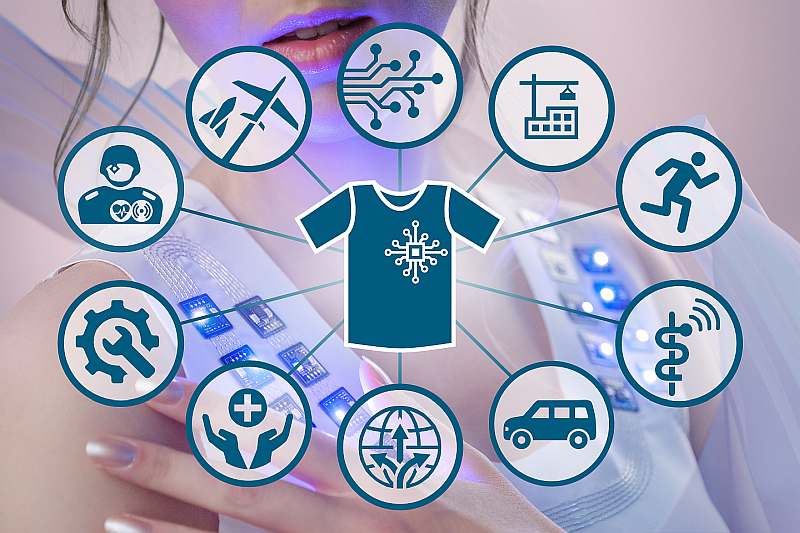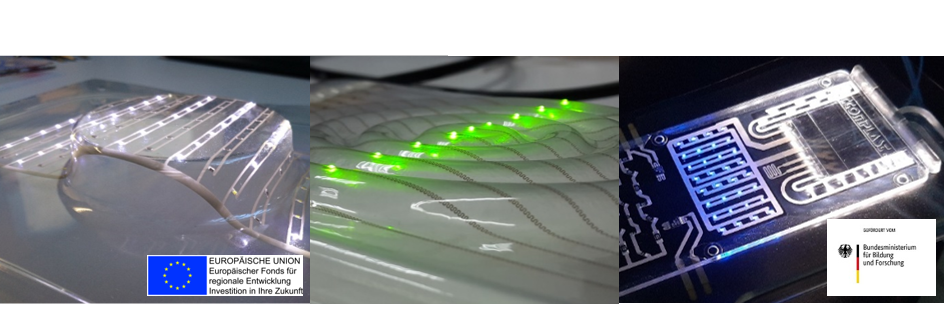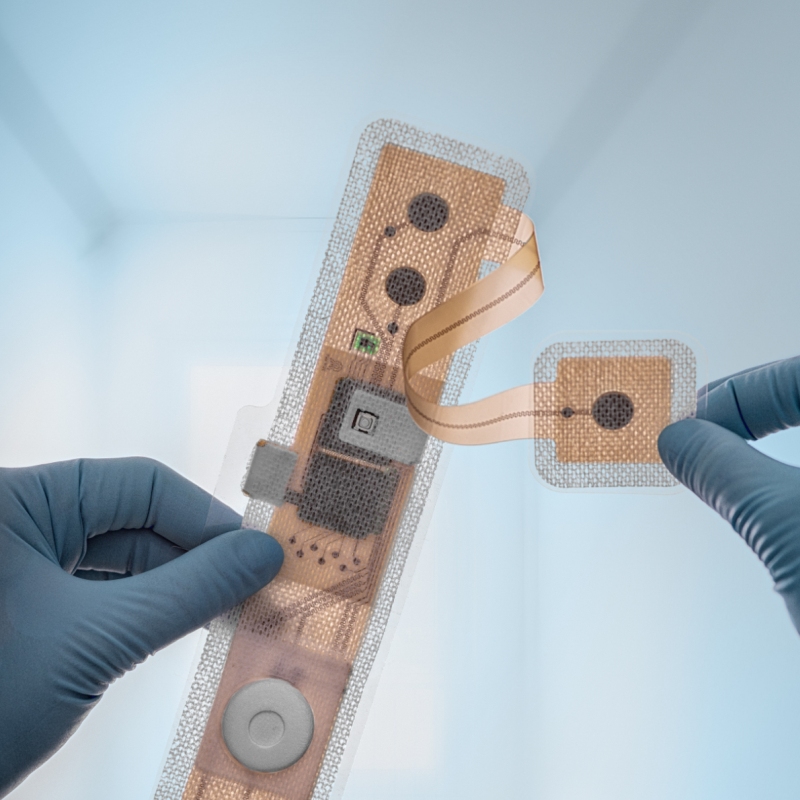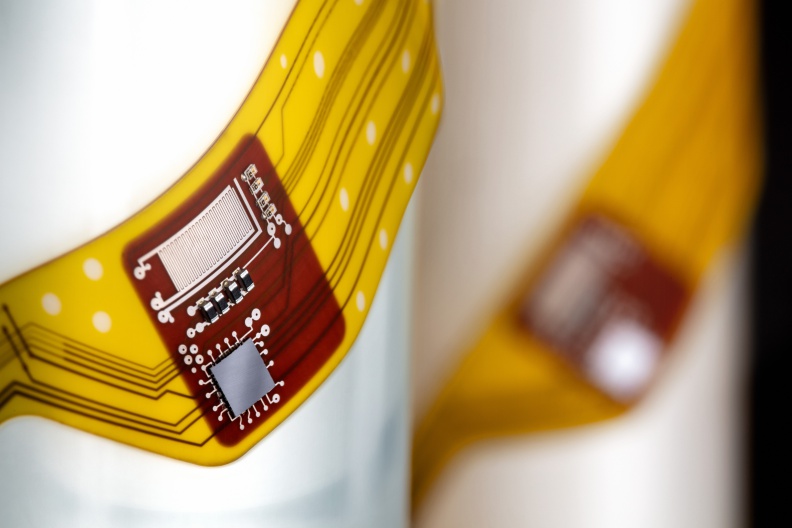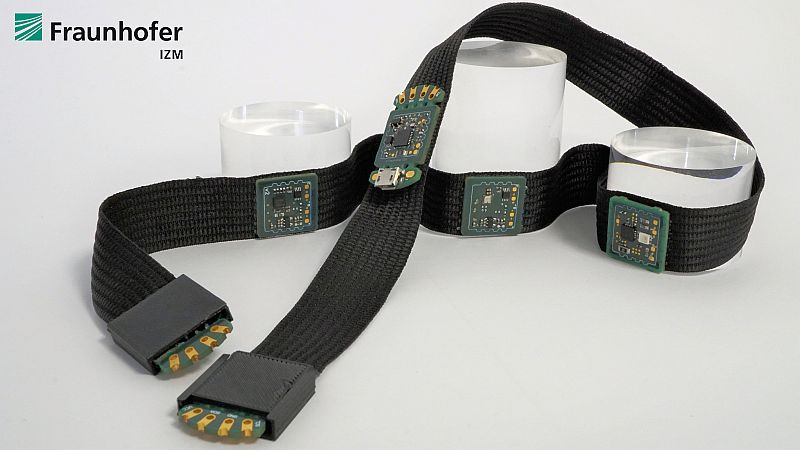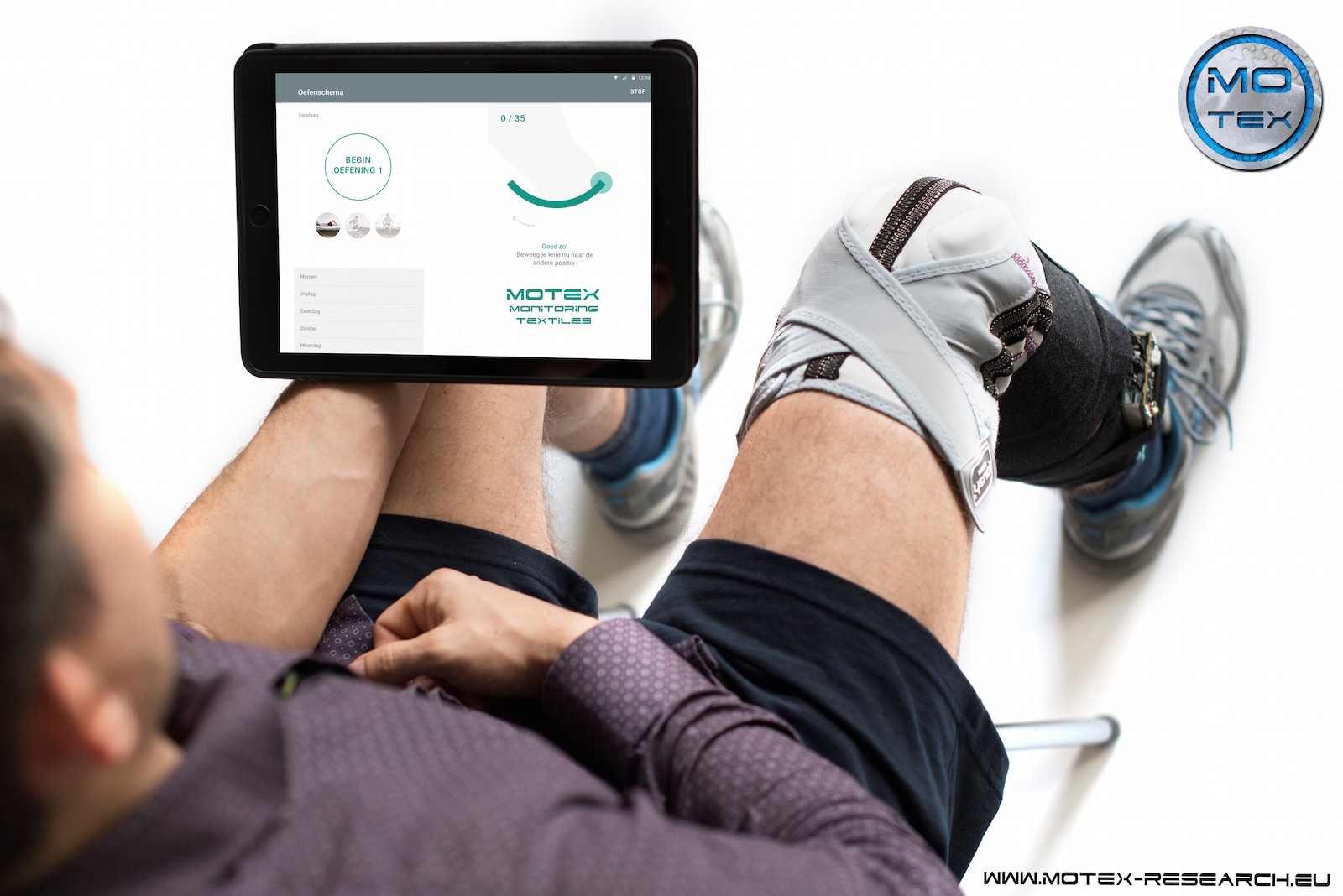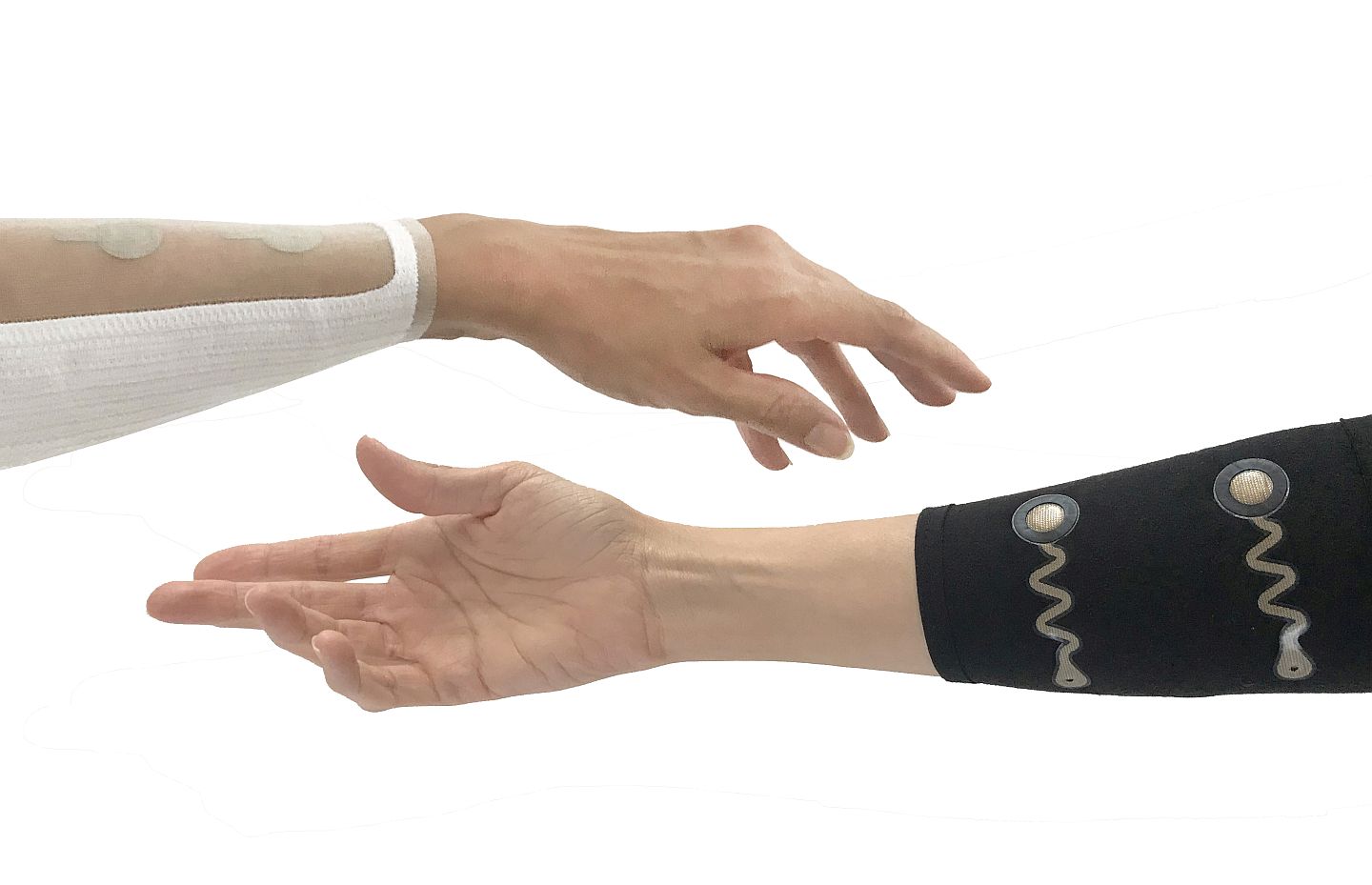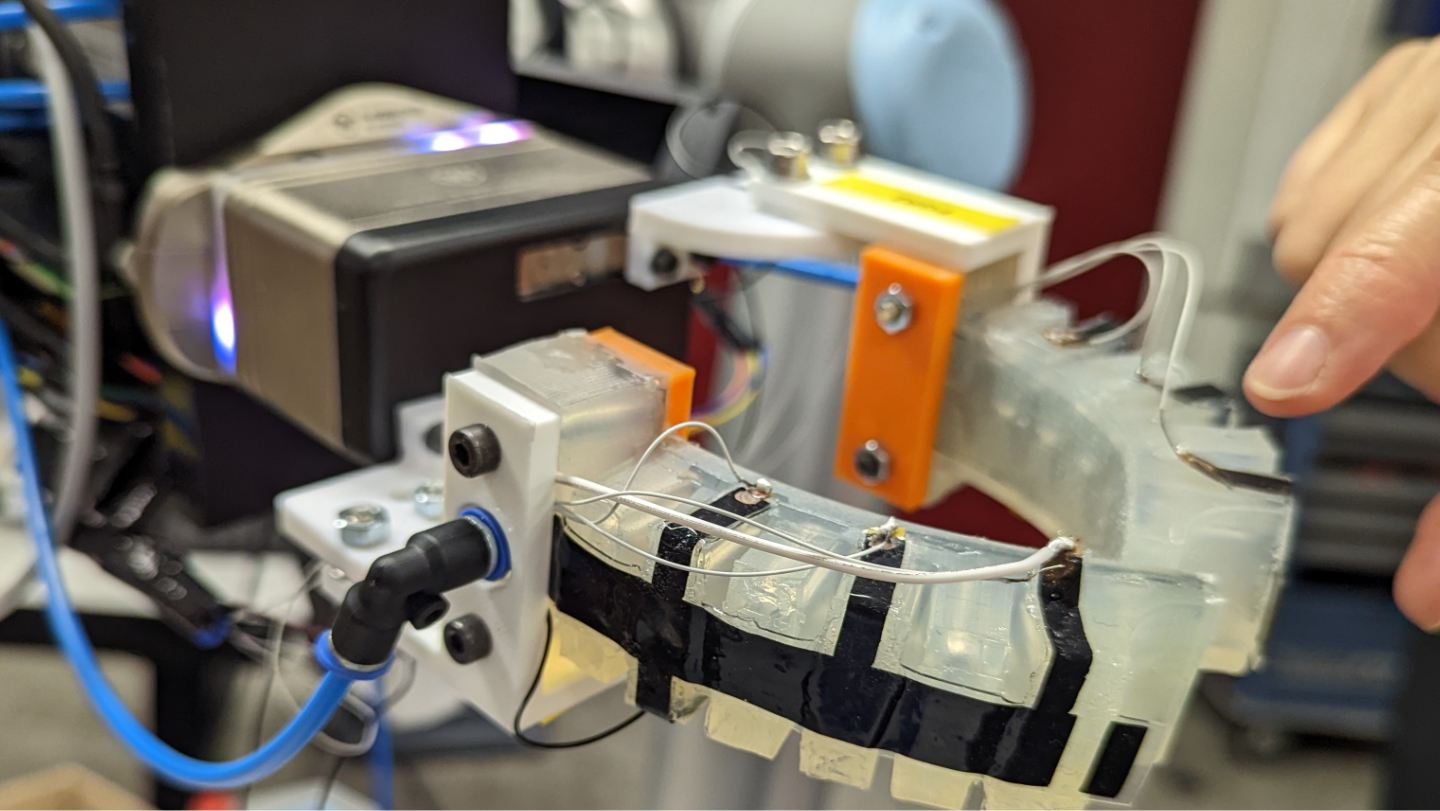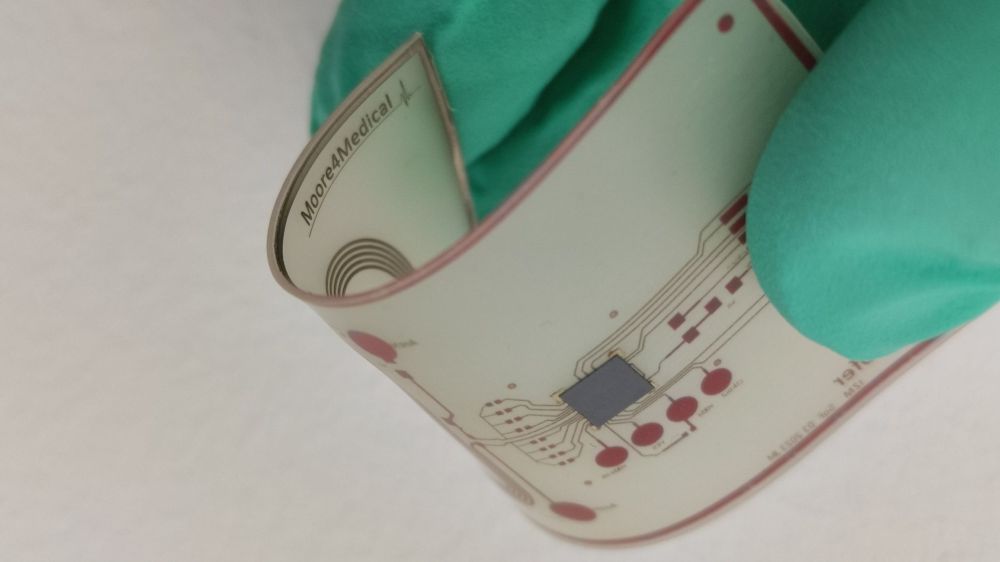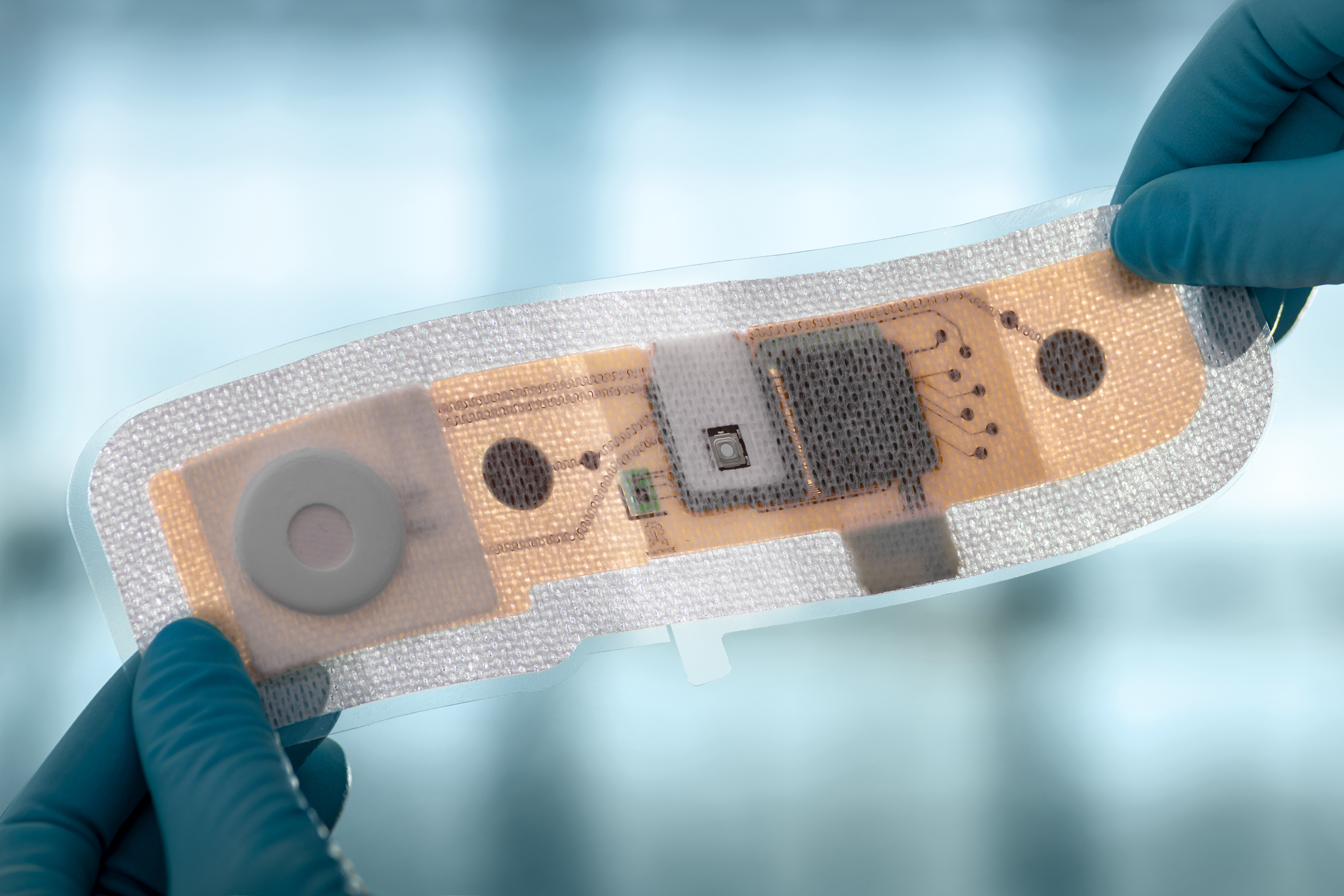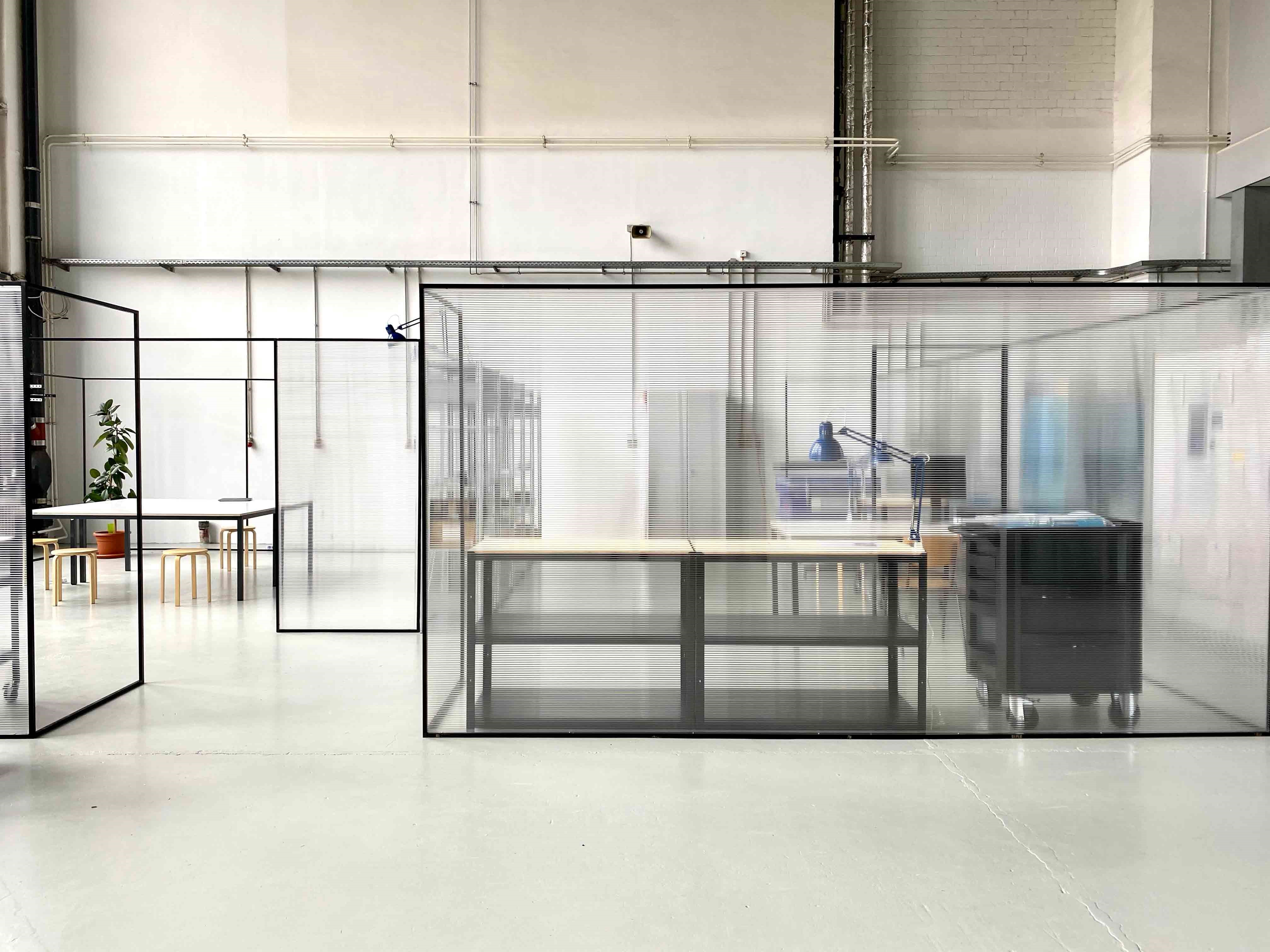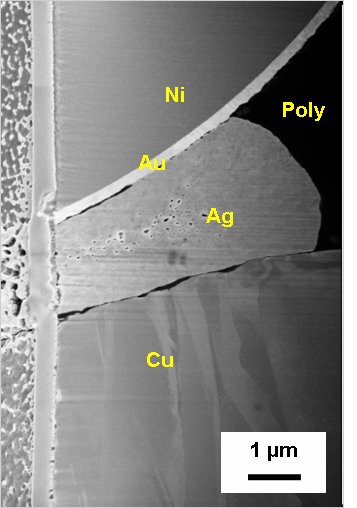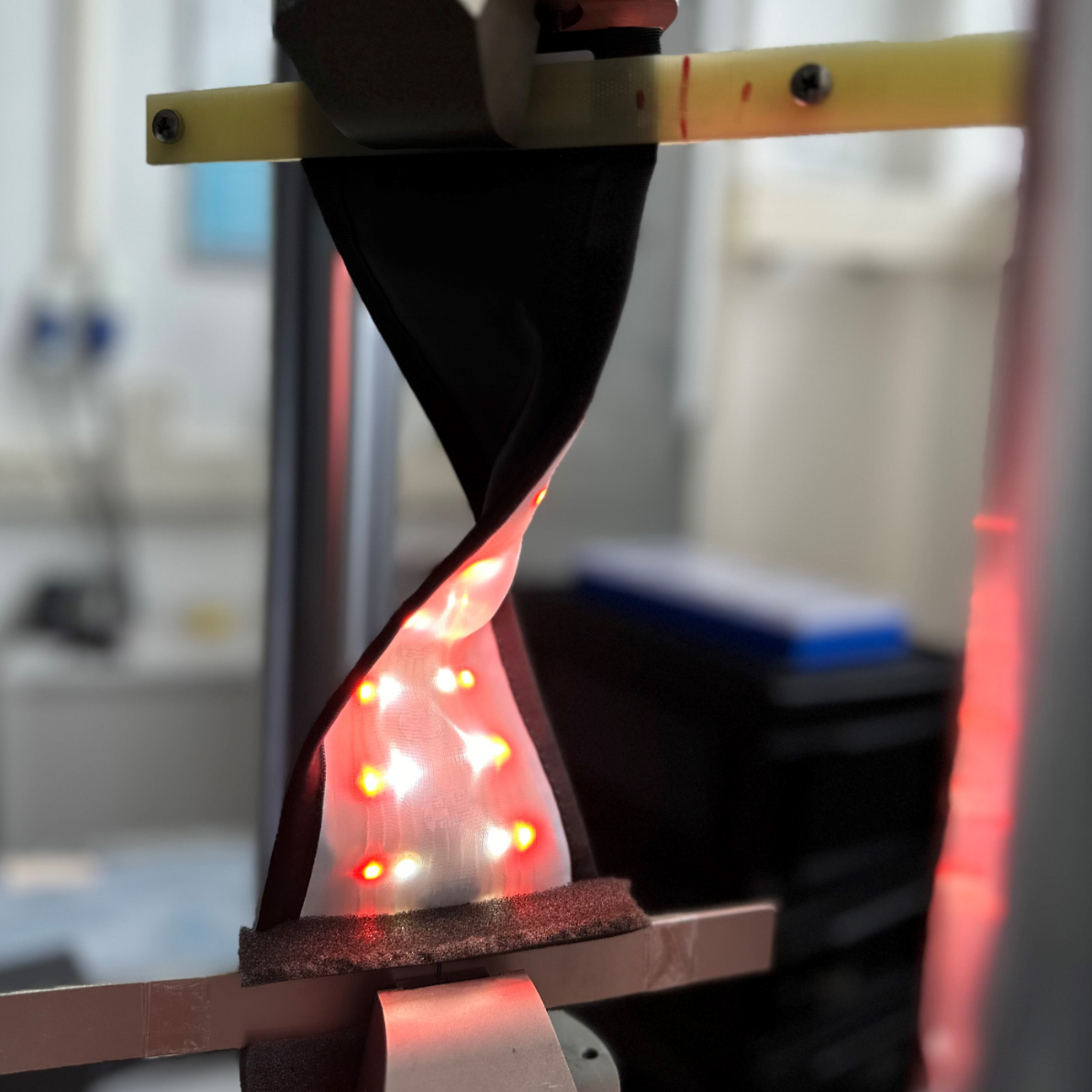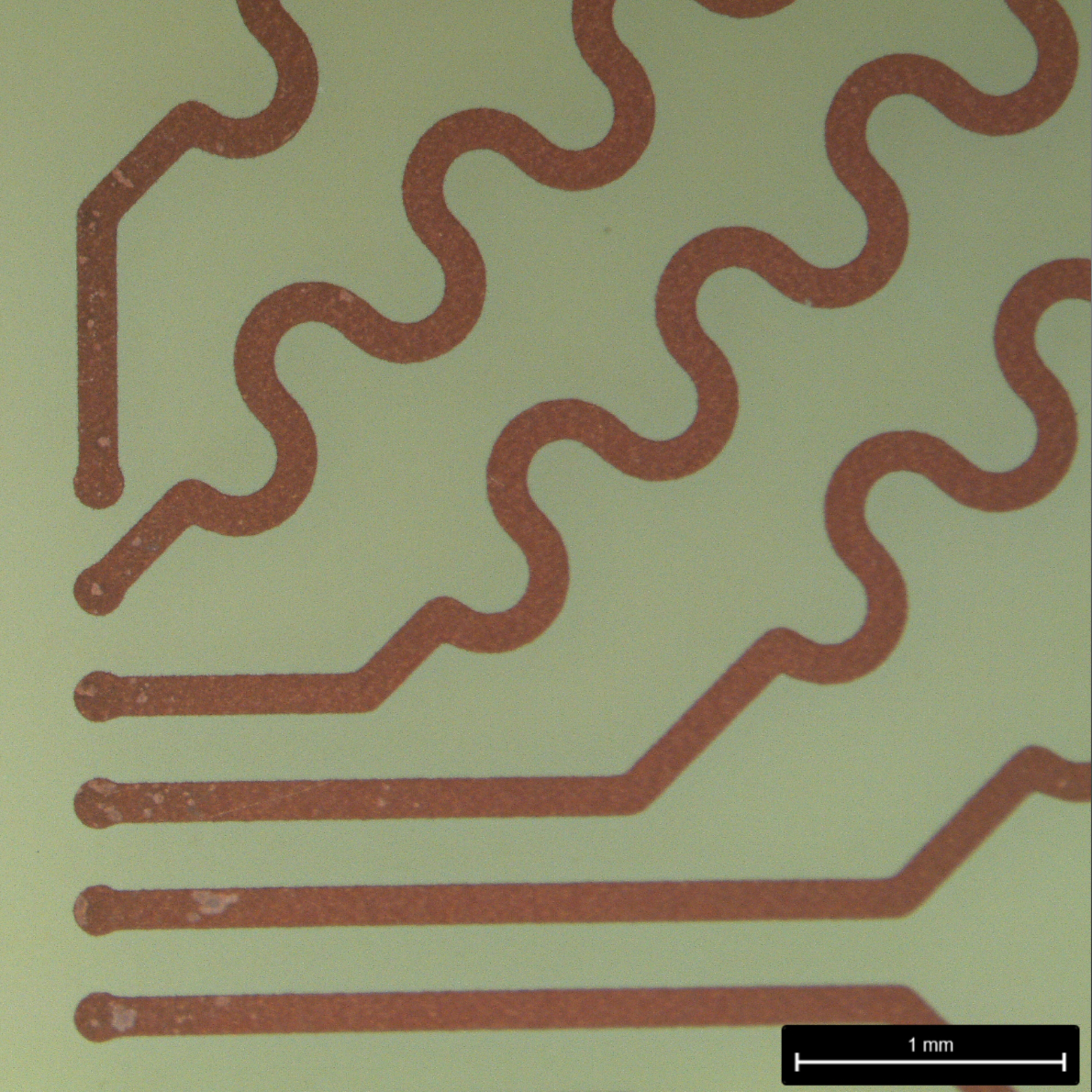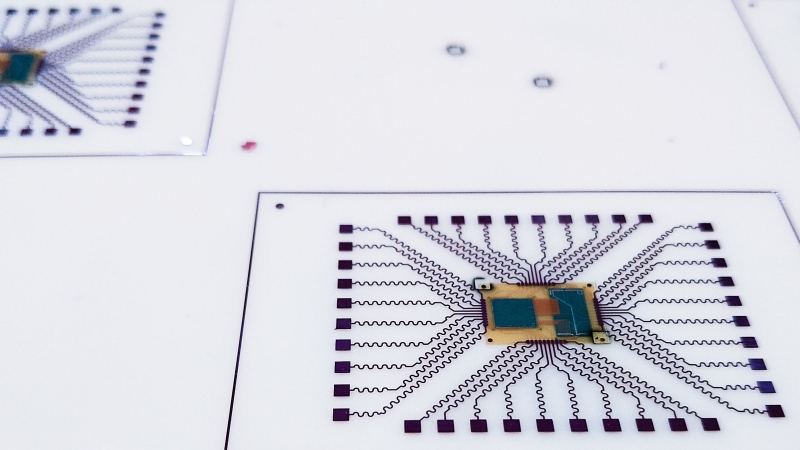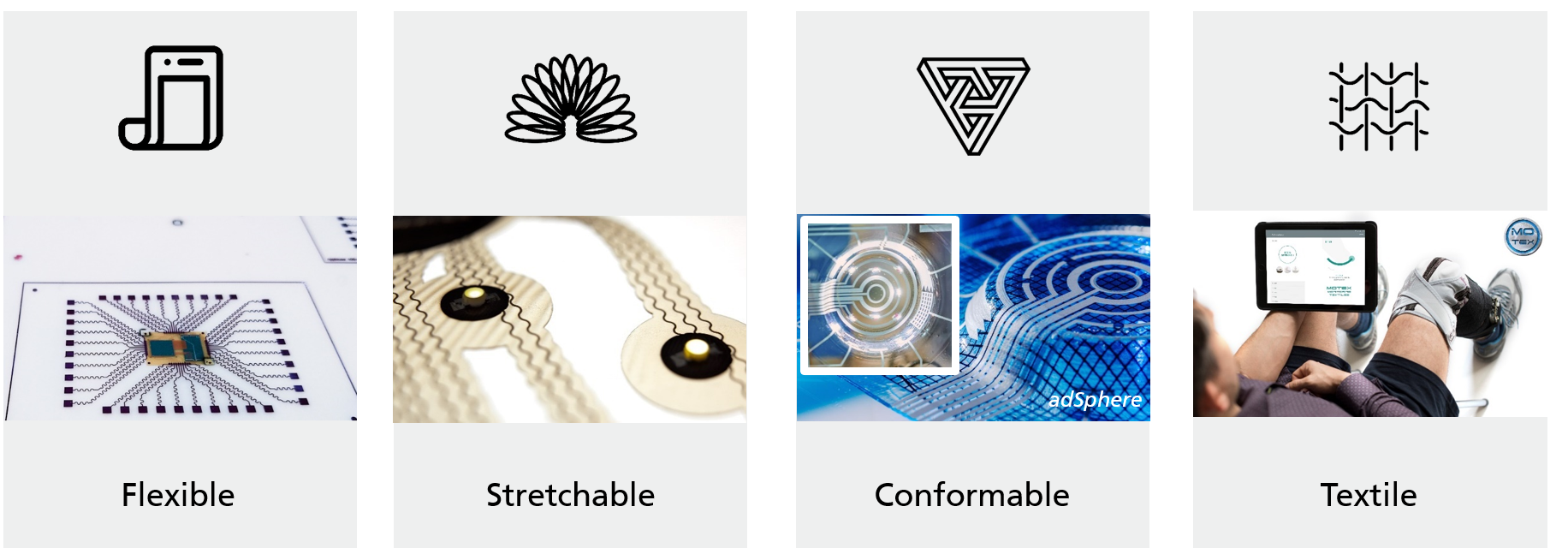
System-on-Flex

The research group System on Flex at Fraunhofer IZM focuses on advancing the fields of flexible hybrid electronics, stretchable electronics and electronic textiles (smart textiles). The goal is developing innovative solutions for various applications. The group focuses on developing scalable manufacturing processes for flexible, stretchable and textile electronic systems. This includes prototyping novel concepts and transitioning them into manufacturing-ready solutions, thereby enabling the production of flexible electronic systems on a larger scale.
FHE describes electronic systems that can conform to different shapes and surfaces and combine components and structures realized using different technologies. This involves design, development and fabrication of flexible circuit boards, interconnects, sensors and components using novel materials and manufacturing techniques.
Another key objective is to enhance the reliability and durability of flexible electronic systems. This involves conducting research to understand the mechanical and electrical properties as well as failure mechanisms of flexible electronics and developing techniques to mitigate issues like fatigue, delamination, and failure under mechanical stress.
The research group aims to provide application-oriented solutions by collaborating with industrial partners and addressing specific challenges in sectors like automotive, healthcare/medical, consumer electronics, defence and smart packaging. The objective is to develop electronic systems tailored to the specific requirements of these industries.
Another important goal is to foster innovation and knowledge transfer by actively participating in collaborative projects, organizing workshops, and publishing research papers. The objective is to contribute to the advancement of the field of flexible hybrid electronics, stretchable electronics and electronic textiles. SoF shares expertise with the scientific community and industry stakeholders.
Tabbed contents
Key Research Areas
Electronic textiles
Compared to purely textile products, electronic textiles (e-textiles) offer added functionality through integrated electronic components. At yarn, textile or product level, integrated circuits enable e-textiles to e.g., heat or cool, create energy, provide sensor and actuator function, collect data or warn their users.
Conformable electronics
Stretchable electronics
Stretchable electronics are increasingly gaining importance in various fields. They find applications in wearables such as smartwatches, smart rings, fitness trackers, and smart clothing. These devices can be comfortably worn on the body without restricting movement, seamlessly integrating into everyday life. Stretchable solar cells and batteries can be used for energy generation and storage.
Flexible electronics
Electronics are everywhere, and today they need to be lightweight and show long-lasting functional reliability. In Fraunhofer IZM's System on Flex working group, we develop technologies for mounting tiny components on and in flexible circuit carriers made of different materials. Research focuses include fine pitch assembly technologies for unpackaged ICs using soldering and adhesive bonding as well as direct embedding of these chips
Services
NCA-Bonding interconnection process for E-Textiles
Many E-Textile applications – like systems to monitor vital signs or log ergonomic data, heating pads, lighting, or innovative human-machine-interfaces – require sensors and electronic components integrated into the fabric itself. This combination of electrical components and soft textile materials and the resulting requirements concerning comfort, washability, design, reliability, or signal stability makes the integration process a complex challenge. Interconnecting electronic modules is especially demanding.
E-Textile washability
Among the most important requirements for garments with integrated electronics – but also for e-textiles from other fields – is their washability. For a textile typical usability, which is indispensable for product acceptance, e-textiles have to be clean- and washable in case of soiling. Especially for medical, sports, care or protective purposes – all key applications for e-textiles – hygiene requirements make the ability to properly clean a product a must.
Prototyping
Our expertise in the field of wearable electronics enables us to develop systems for biomonitoring. Using sensors, the latest ICs on the market, and electronic components, we can create wearable devices that capture and analyze important parameters (HR, HRV, ECG, EMG, EEG, SpO2, BioZ, Motion, Pressure, etc.). This enables you to monitor and evaluate health data in real-time.
Substrate technologies
Flexible substrates are a key component in changing the way we interact with and use electronic devices. Unlike traditional rigid printed circuit boards, flexible electronics can be bent, twisted, and shaped to fit different form factors, making them ideal for applications where flexibility is crucial. Based on customer requirements or layouts, flexible printed circuit boards can be manufactured using various materials and structuring technologies.
Projects
Harnessing the Potential of Smart Textile to enhance Soldier Systems
Project ARMETISS
ARMETISS ambition is to unlock the potential of smart textiles for personal protection equipment through their integration into state-of-the-art soldier systems.
Those new generation of smart textiles have a wide potential for the soldier gear, not only improving the soldier's capabilities through thermo-regulation, but also incorporating data-monitoring and communication systems.
Sensor bracelet measures a range of environmental forces to improve the treatment of lung diseases
Project REMEDIA
Tiny particulates or noxious gases: From the day they are born, all people are exposed to a range of environmental forces. These forces constitute the exposome and affect the health and wellbeing of people around the world. A European research project has been set up to explore how the exposome affects the course of lung diseases.
Art-Tech collaborations
Project
Art and design are inseparably interwoven with the textile world. For e-textiles at the intersection of textiles and electronics, creative aspects play an equally important role. That is why we have been cooperating with artists and designers in co-creative processes for more than 20 years. Through new impulses and changing perspectives, such collaborations hold enormous potential for innovation.
SoMaRo
Project
In the interdisciplinary project SoMaRo, a unique robot gripping technology based on soft, adaptively controllable soft kinematics with integrated soft actuators, sensors and electronics based on novel smart materials is developed in cooperation with the Fraunhofer Institutes IPK, ISC and IAP. which can be specifically deformed using software control with electric fields. Intuitive-sensitive grippers will be realized.
F2E – Free Form Electronics
Project
In this project, at Fraunhofer IZM, we developed fully in-line compatible SMT processes based on thermoplastic substrates, printing and adhesive bonding. The focus was on the development of robust assembly and interconnection technology for electronic components that can withstand the high thermal and mechanical stresses that occur in thermoforming and injection molding technology.
Newlife
Project
Newlife has received funding from the KDT Joint Undertaking (JU) under grant agreement No 101095792. The JU receives support from the European Union’s Horizon Europe research and innovation programme and Finland, Germany, Ireland, Netherlands, Sweden and Switzerland. This project has received funding from the Swiss State Secretariat for Education, Research and Innovation (SERI).
Moore4Medical
Project
The treatment of chronic diseases does not necessarily have to be accompanied by costly medications and undesirable side effects. Neuromodulation can be used to treat diseases such as chronic headaches, asthma or Parkinson's disease. In order to realize this project, researchers at Fraunhofer IZM are developing a new generation of microimplants in the Europe-wide Moore4Medical project.
Applause
Project
SMART PATCHES, which can be used for vital signs monitoring, are now available on the market and are used for a variety of useful clinical applications. This has already led to a paradigm shift in the diagnosis of multiple diseases - e.g. atrial fibrillation.
As part of the project APPLAUSE, a new type of patch architecture was implemented in cooperation with the partners and at the same time new integration technologies were examined and developed in order to eliminate the previous limitations.
Sensor patches as fitness trackers
Project XPatch
The Eurostars project XPatch is developing a flexible sensor system that can track biochemical information in real time. The international consortium is working on a new generation of diagnostic patches that monitor the sweat of high performance athletes for second-by-second medical information about their cardiovascular fitness. As part of the project, Fraunhofer IZM is working on the energy supply, communication, and system integration concepts for the flexible and autonomous fitness monitor.
Equipment
Research labs for E-Textiles
With the TexLab and the Textile Prototyping Lab (TPL), the Fraunhofer IZM offers outstanding resources, highly qualified staff, years of experience and a multitude of tools to advance and support the development of innovative e-textile applications.
Several state-of the art lamination presses allow for the seamless integration of electronic modules into textiles. With an industrial embroidery machine including TFP capability, a variety of conductive yarns and wires can be directly sewn onto textiles to realize complex electronic circuitry. Thermoplastic materials can be joined using our ultrasonic spot and rotary welding machines.
Analytics
Analytics is an essential component for the verification of microelectronic systems. It is used for quality control, fault analysis, material characterization, process optimization, and reliability assessment. Non-destructive analytics without prior sample preparation utilize light, X-ray, and low-vacuum scanning electron microscopes. For three-dimensional volume examinations, Micro X-ray Computed Tomography (Micro-XCT) is used. High-resolution analysis is made possible by cross-sectioning, which is examined using light and scanning electron microscopes (in high vacuum). Additionally, ion beam techniques (focused ion beam = FIB) can be employed for target preparation in the micrometer range. Energy-dispersive X-ray spectroscopy (EDX) is used to determine the elements present in the sample.
Reliability tests
Substrate development
The substrate line at IZM enables the production of flexible substrates in sheet sizes up to 60 x 40 cm2. In addition to polyimide as a typical substrate material, thermoplastic materials (TPU, PC, LCP) are increasingly being used, as well as materials that are particularly suitable for medical applications (e.g. Parylene, LCP). Subtractive and semi-additive patterning processes are used for copper conductive traces, allowing for 10 µm lines/space to be achieved.
 Fraunhofer Institute for Reliability and Microintegration IZM
Fraunhofer Institute for Reliability and Microintegration IZM